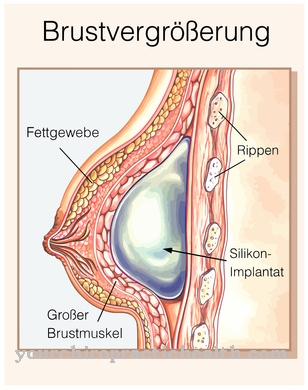As Mini Mental Status Test is a test method for the detection of dementia and Alzheimer's disease. The method can be used to determine cognitive deficits.
What is the Mini Mental Status Test?
The Mini-Mental-Status-Test (MMST) is a simple test procedure for the detection of dementia. The method was developed in 1975 by the physician Folstein and is also known as Folstein test known. Another name is the English Mini Mental State Examination (MMSE).
The Mini-Mental-Status-Test is a suitable method for assessing cognitive deficits in the context of dementia or Alzheimer's disease for the first time. The method is also suitable for controlling the course of the disease. In diagnosing Alzheimer's and dementia, the mini-mental status test is now one of the most common methods. It consists of a questionnaire which is used to check important brain functions such as language, attention, memory, orientation and numeracy.
Function, effect & goals
The mini mental status test is used for the diagnostic clarification of psychological performance disorders. Their course is also checked. However, it is not possible to diagnose the various forms of dementia.
The mini-mental status test is carried out in that the patient answers some relevant points on the questionnaire. The doctor can control important cognitive functions through the tasks set. This includes the ability to remember and remember, language and understanding of language, spatial and temporal orientation, arithmetic, writing, reading and drawing. The test usually only takes 10 minutes. The mini mental status test consists of several questions. So the patient should indicate the current time. On request, he must also provide information on the date, day of the week, month, year or season. He receives one point for each question answered.
Further questions in the context of the test procedure are the current whereabouts, in which state, district or city it is located and what the name of the clinic is. The next part of the mini mental status test is memorizing and repeating three terms. It can be a table, a penny or an apple. Furthermore, the patient must subtract seven from the number 100. The same applies to the result, which is done a total of five times. Then he repeats the terms from test item 3. The doctor also shows him a wristwatch and a pen, which he must name correctly. Furthermore, he repeats the phrase “no ifs and buts” as accurately as possible.
The next part of the test is folding a piece of paper. This is then placed on the floor. In addition, the patient is asked to read the sentence "Close your eyes" from a sheet of paper and close your eyes. Test point 10 is to write down any sentence. The sentence should contain at least one predicate and one subject. It has to be thought up spontaneously and without guidelines. Correct grammar and spelling are not important.
Lastly, the patient draws two pentagons that overlap. He will receive a template for this. To ensure that the test result is not falsified, a number of important criteria must be met. This means that there is a disturbance-free atmosphere and that there are no sensory restrictions such as reduced hearing or visual performance. In addition, pain or a non-irritant hospital environment can affect attention and brain performance. The measurable IQ is reduced by up to 20 points.
At the end of the test, the doctor adds up the points awarded. For each task that is successfully completed, the patient receives one point. The mini mental status test scale is 0 to 30 points. If the patient reaches 30 points, he has unrestricted cognitive functions. If, on the other hand, he does not receive a single point, there is serious damage. With a score of 20 to 26, mild dementia is assumed. 10 to 19 points indicate moderate dementia. If no more than 9 points are achieved, this is considered an indication of severe dementia. It only takes a few minutes for the test to be evaluated.
You can find your medication here
➔ Medicines against memory disorders and forgetfulnessRisks, side effects & dangers
Basically, the mini mental status test is a reliable quick screening method that can be carried out quickly and easily. Risks and side effects are not to be feared, since it is only a question of answering a questionnaire.
However, a disadvantage of the method is its high susceptibility to interference. In addition, the method can only be used to roughly estimate cognitive deficits. In people who have a high level of education, the mini-mental status test can often lead to a wrong result, which means that dementia cannot be detected. If, on the other hand, there is a low level of education, there is a risk of a false positive result.
Furthermore, the mini-mental status test cannot be used to differentiate between different cognitive abilities. For this reason, it is often carried out together with other test methods. Some doctors also criticize the fact that mild cognitive disorders cannot be diagnosed with the test method. British studies also point to the risk of healthy people being classified as sick when they are not. In addition, the predictive value of a test always depends on the frequency of the disease. If the disease occurs less frequently, the likelihood increases that a positive result of the test actually indicates a disorder.
In the event of a positive result of the mini-mental status test, a careful distinction must be made from depression. This can also significantly limit the cognitive functions.












.jpg)



.jpg)










.jpg)
